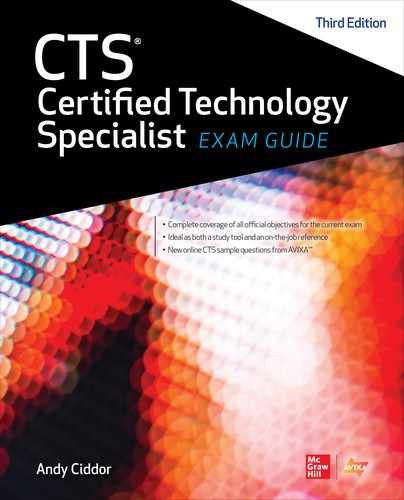Book Description
Publisher's Note: Products purchased from Third Party sellers are not guaranteed by the publisher for quality, authenticity, or access to any online entitlements included with the product.
The Most Complete, Up-to-Date CTS Exam Study System
Published with AVIXA™, CTS Certified Technical Specialist Exam Guide, Third Edition provides comprehensive coverage of all objectives on the latest release of the AVIXA Certified Technology Specialist exam—the leading internationally recognized audiovisual (AV) certification. You’ll get learning objectives at the beginning of each chapter, best practices, checklists, diagrams, photos, chapter review questions with in-depth explanations, and a full-color insert. Designed to help you prepare for the CTS exam, this authoritative resource also serves as an essential on-the-job reference.
Digital content includes:
• New sample CTS questions from AVIXA
Covers all current CTS exam objectives, including how to:
• Gather customer information
• Conduct a site survey
• Evaluate and recommend changes to a site environment
• Develop an AV project scope
• Design AV solutions
• Integrate AV solutions
• Operate AV solutions
• Manage an AV project
• Maintain AV operations
• Conduct maintenance activities
• Troubleshoot and repair AV solutions
